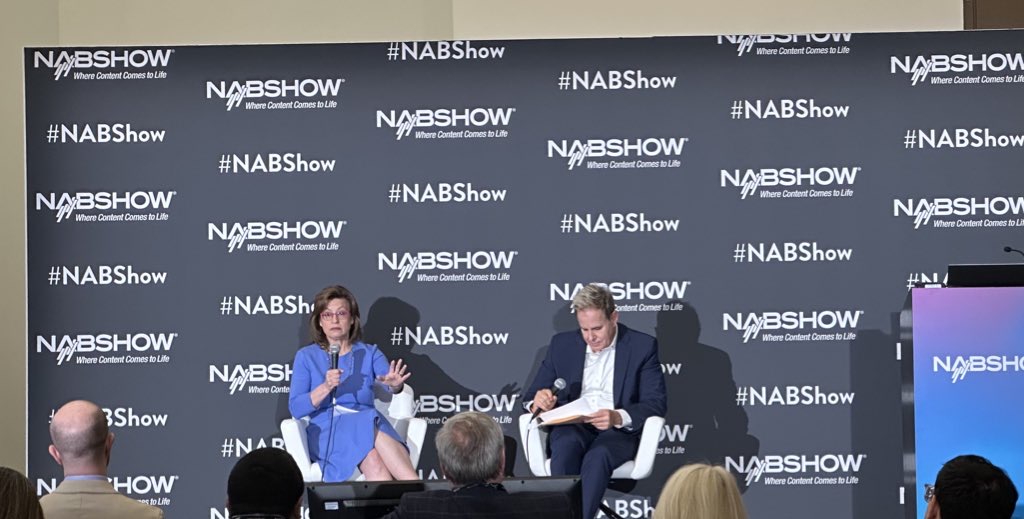Tech in Place to Support Addressable Advertising With NextGen TV, But More Is Needed
Imagine’s Graham Heap discusses the tech and a hope to shift from spots to audience-based buying and selling

NextGen TV offers broadcasters the opportunity to personalize ads sent to households or, a bit more broadly, zone ad delivery to neighborhoods in a DMA, creating entirely new competitive possibilities for local television stations and a way to better serve the needs of advertisers.
I reached out to Graham Heap, senior director of the Ad Tech product portfolio at Imagine Communications, to find out if the advertising technology is in place to support broadcasters looking to cash in on these addressable advertising opportunities.
What I learned was that ad technology being used to enable addressable ads for platforms like OTT, cable and satellite are easily repurposed for NextGen TV.
But there’s more to the story. To fully leverage the possibilities of addressable advertising there needs to be a shift in mindset among advertisers, ad agencies and broadcasters, one that grasps the value of buying—and selling—audiences in the aggregate as opposed to the traditional commercial spot, says Heap.
In this interview, Heap discusses NextGen TV ad tech as well as how a shift in focus away from spots to an aggregated audience will better serve advertisers and broadcasters.
(An edited transcript.)
TVTechnology: As addressable advertising becomes available to broadcasters deploying NextGen TV, is the ad tech that’s grown up to support other media from an addressable ad point of view in place to assist broadcasters?
Get the TV Tech Newsletter
The professional video industry's #1 source for news, trends and product and tech information. Sign up below.

Graham Heap: For us, I would say ATSC 3.0 is a blueprint, if you like. It is just another flavor of [media supporting addressable ads] from an ad tech, campaign management and billing point of view.
I don’t care if it’s ATSC 3.0 that’s the vehicle for the serving, or it’s a set-top box, or it’s an ad attached to an OTT service somewhere.
We think there’s a lot of applicability of the things we’ve been developing globally around ad insertion that will absolutely play out in the ATSC 3.0 model.
TVT: How would you describe where U.S. broadcasters are today in their thinking about taking advantage of addressable advertising in an ATSC 3.0 future?
GH: I can guarantee you they are thinking about it. We have a good relationship with some of the big U.S. broadcasters, and it’s very much front of mind for them.
ATSC 3.0 should be a game changer for broadcast television, and it should be a game changer for U.S. ad tech, the business side of it, the income side of the business.
So yes, there is a lot of work going on. There are different ways of utilizing that technology.
TVT: What insight do you have on how U.S. broadcasters might sell addressable advertising?
GH: Knowing that you can insert something is great, but you have to step back and try to build a business model around it.
Is addressable advertising a separate offering that’s billed a different way or do I want to bake that into my sales and traffic operation and have it as an upsell on my existing business?
PLUS: Bringing Profits to NextGen TV
There are lots of different ways, and you can take multiple paths. You don’t have to choose one. Right now, there’s a lot of thought going into that.
TVT: NextGen TV offers OTT transport of packets to smart TVs as well as OTA delivery. There are ways both could be used for geographically zoned delivery of content and advertising. Will this present a challenge for ad technology?
GH: It’s being done already. Addressable advertising in the U.K. is exactly the same model. Sky, the satellite broadcaster over here, traditionally had a national footprint only, effectively over-the-air, with one signal going to everybody.
With their addressable solution, where they are inserting ads in the [set-top] box, they are not really doing it that much for genuine personal advertising where they are hitting me with an ad.
What they really are doing is going to the high-value Aston Martin car garage in Esher, Surrey, which can afford those cars, and they are selling very specific campaigns to a brand new set of buyers that would never think of using TV.
Having said that, this is a different topic, but the U.S. has a way to go in terms of getting the buying community to be willing and able to buy audience instead of buying spots.
TVT: Do you mean something like digital, where audience is aggregated and sold vs. television with spot sales?
GH: Yes. There is still a model in play in the main 30-second spot business which is: “I am going to buy spots from you, and you’re going to guarantee an audience to me for those spots.”
So I kind of think I am buying an audience, and I try to place my orders in such a way that I get the audience I want.
But if the commitment you’ve made to the audience doesn’t get delivered by the spots you’ve committed to, you owe me.
The rest of the world doesn’t suffer from this. They are selling a level of audience and committing to a level of audience and therefore if I deliver that audience I am good. It doesn’t matter exactly what spots I use to do that, exactly where they are placed.
As a buyer, I will have some boundaries of what I won’t accept. But generally most of the delivery is run by the seller—by the station side.
As the opportunities of things like ATSC 3.0 start to develop and become real, that is all about audience. It’s all founded on the idea that I’m going to find you the audience.
So, I think we need to tackle both those things together because we want the buyers to become audience-aware and keen to do that on my traditional business while at the same time being keen to use these new technologies so broadcasters can deliver audience.
TVT: How does this shift from a spot-buying mindset—and selling for that matter—happen, especially when buyers are accustomed to buying spots?
GH: There’s a bit of a fear factor that needs to be broken down. You know, some trials and some slow starts, carve outs or other ways of approaching it. This is not a big bang.
We just put our software into Televisa, one of the biggest broadcasters in Mexico because they are taking this journey. But they don’t just flip a switch and say, “I am selling this way now, and I used to sell that way.” They just put a new piece on their menu and attract customers to it. I think that approach can help to loosen the fear factor a bit.
More information about ad tech from Imagine Communications is available on the company’s website.
Phil Kurz is a contributing editor to TV Tech. He has written about TV and video technology for more than 30 years and served as editor of three leading industry magazines. He earned a Bachelor of Journalism and a Master’s Degree in Journalism from the University of Missouri-Columbia School of Journalism.

